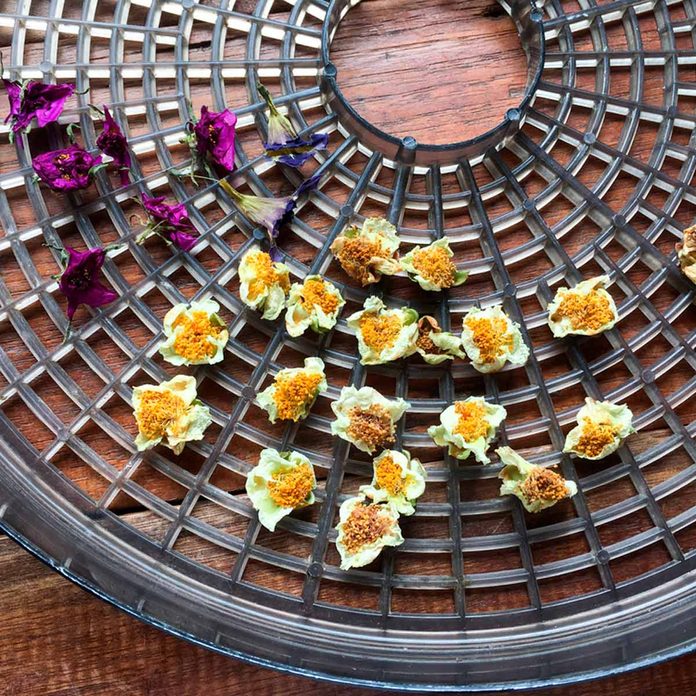
Food Dehydrator Uses: Preserve Flowers and Herbs
Dried flowers and herbs lend themselves to craft projects such as scrapbooking and framed mementos. Take flowers from a wedding, special dance or party and dry them in your food dehydrator. Then create a keepsake scrapbook page or frame to capture the moment. And if you really want to kick things up a level, consider incorporating the flowers or herbs into homemade paper (which can also be made in your dehydrator!).

Treats for Sensitive Dogs
For families the world over, dogs are more than pets; they’re members of the family! So when our furry friends develop allergies of their own, we change their diet, often to healthier but more expensive grain-free foods.
Pet foods based on sweet potatoes are expensive enough, but what about treats? Instead of shelling out ridiculous amounts of cash for hypoallergenic dog treats, just load your food dehydrator with sliced sweet potato and wait for the dehydrator to do its magic. For more fun DIY projects with the pet owner in mind, check out this collection of clever pet products you can make at home.

Drying Winter Hats and Gloves
Fun in the snow is a classic winter activity, but when the kids (or kids of all ages!) retreat inside after a snowball fight, there’s often a mound of wet hats and gloves left by the door. Slow to dry and unpleasant to put back on, what’s to be done with these soggy artifacts of winter? You guessed it: your food dehydrator can come to the rescue!
Place your hats and gloves in the dehydrator tray, and the moisture will be wicked right out of them. This is far cheaper that revving up a dryer to full heat for a few gloves, and it will keep you and your loved ones warm and toasty all through the season. Of course, not all winter clothes and equipment will fit into a food dehydrator, so you’ll want to have another plan for how to dry out and store things like your winter sports gear.
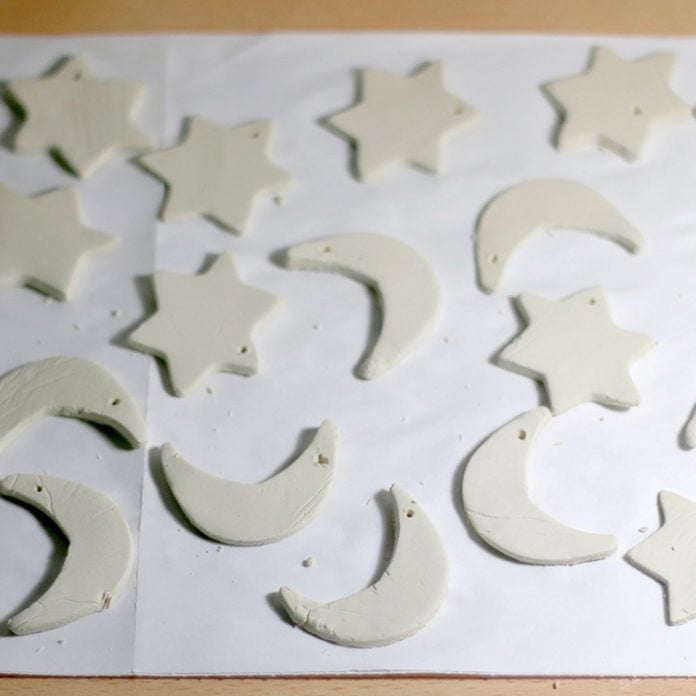
DIY Kiln
If you’ve ever worked with water-based clays, then you know that letting your creations dry in the open air can cause them to crack or split. But unless you’re a serious artisan, chances are you don’t want to dedicate the money and space to a kiln. Luckily, your food dehydrator is essentially an ad hoc kiln for water-based clays. Simply put your finished clay piece inside the dehydrator and it will harden quickly and evenly. It doesn’t take the place of a true kiln, of course, but if you are a hobbyist or enjoy craft time with the kids, this might be the next best thing.
In the photo, you can see clay ornaments, shaped with a cookie cutter, with small holes for a ribbon. This article is loaded with more great ornament creation ideas.
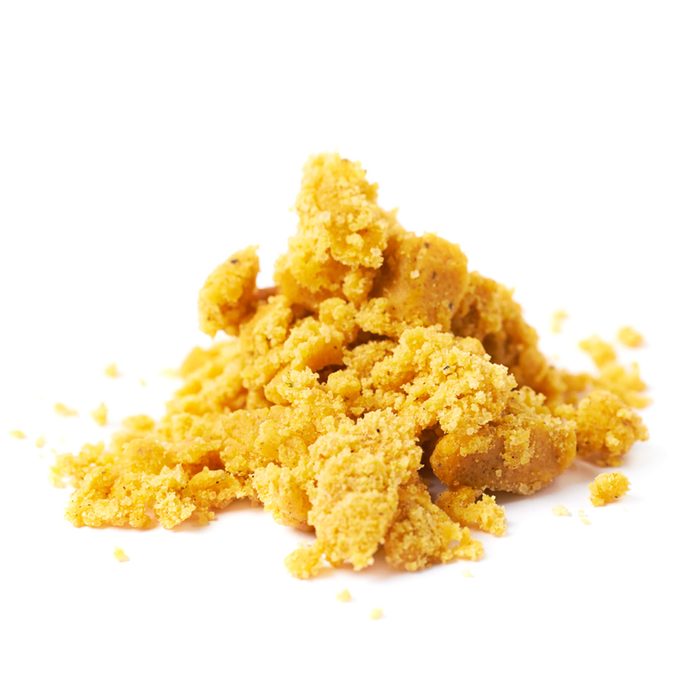
Soup!
Well, dry soup.
If you’ve ever had prepackaged, dry soup either in a package or microwavable container, then you’ve essentially had bullion. Bouillon is condensed, dehydrated soup and it’s perfect for meals on the go or for flavoring a recipe you’re trying to bring to life. And you can make your own bullion with a food dehydrator! Boil down a simple broth until it forms a gel in the bottom of the pan, then spread that gel out on a tray and place it in the dehydrator. The resulting dry sheet will grind into a powder that can be stored for soup on demand.
Add your homemade bouillon to recipes for additional flavor, or take it with you on hiking or camping trips. If you enjoy hiking and camping this is a real game changer, as it lets you have quality food with almost no carry weight.
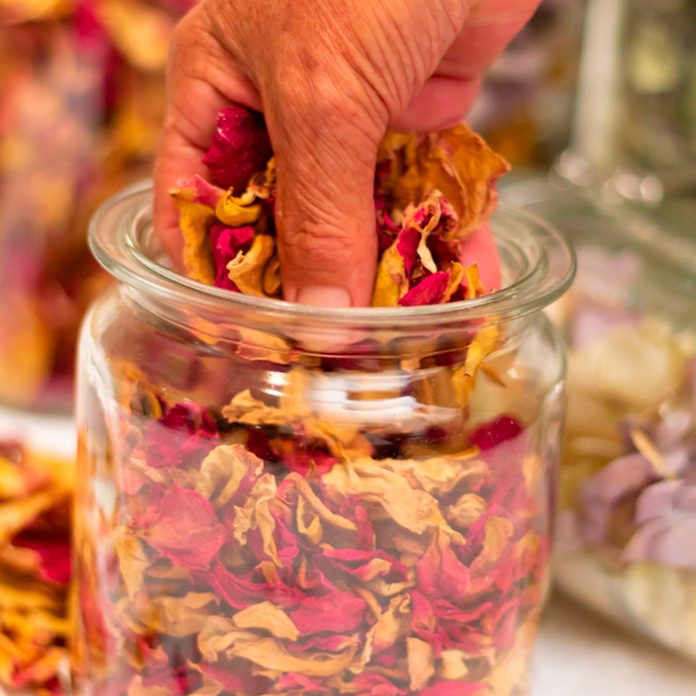
DIY Potpourri
Potpourri has been used for centuries to brighten the smell of any space that could use a little freshening. If you’ve ever bought potpourri at a specialty store, you know that it’s price can vary quite a bit, from next to nothing to more than its weight in gold. If you want high-quality potpourri at an incredibly affordable price, turn to your food dehydrator!
Dry out a selection of herbs, spices and flowers and experiment with different blends. Rose petals and other fragrant flowers make great potpourri, and spices such as clove and cinnamon add layers of fragrance. And they look great, with a dramatic visual element along with their beautiful smell. After dehydrating the petals and spices, you can enhance the fragrance with a few drops of essential oil.
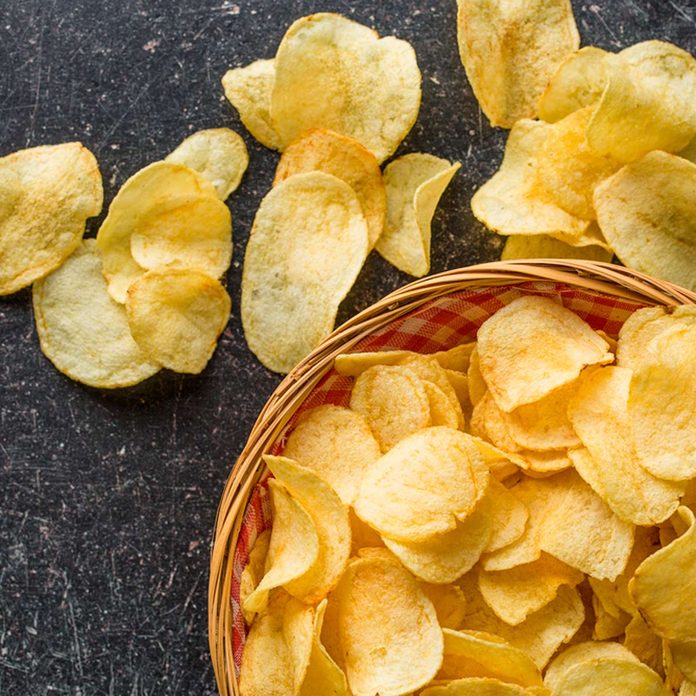
Rejuvenate Stale Chips or Crackers
There are few things more disappointing than biting into a chip or cracker only to find that it’s gone stale. But what do we mean when we say the chip is stale? Simply that it’s gotten soggy. As long as the food isn’t spoiled, just slide it into the food dehydrator and watch it spring back to life. The dehydrator can’t deal with moldy or rotten food, obviously, but if you have a bag of chips that was simply left open overnight there’s no reason to pitch it when you can rescue it!
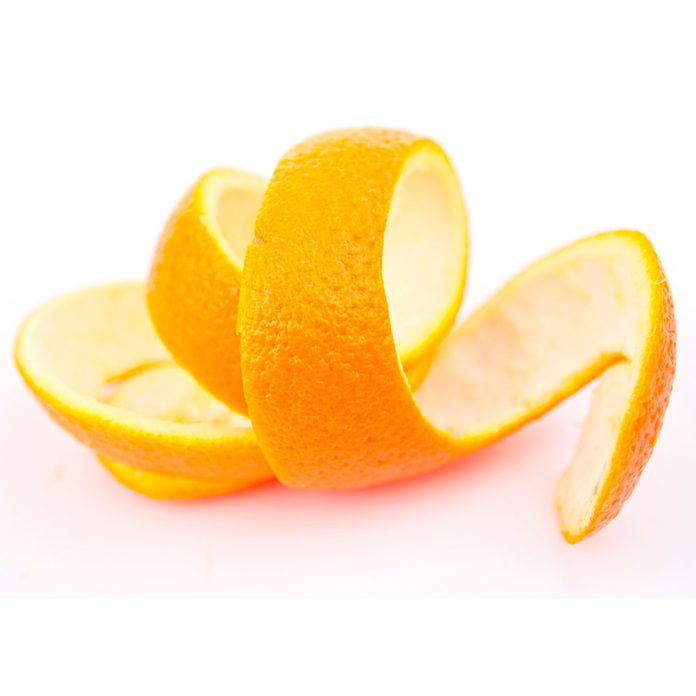
Orange-Scented Firestarters
It may not be surprising to put orange slices into a food dehydrator, but what about orange peel? A dehydrator will turn orange peel into a fantastic, scented firestarter. The rind dries out, becoming much more flammable, while the orange’s oils condense and concentrate, meaning that the peel will give off a delightful citrus odor when burned.
Use them to help start a fire in the family fire pit, or throw them on once the fire is going just for the pleasant smell. If you don’t have a fire pit already, here are some excellent tips on how to build one!
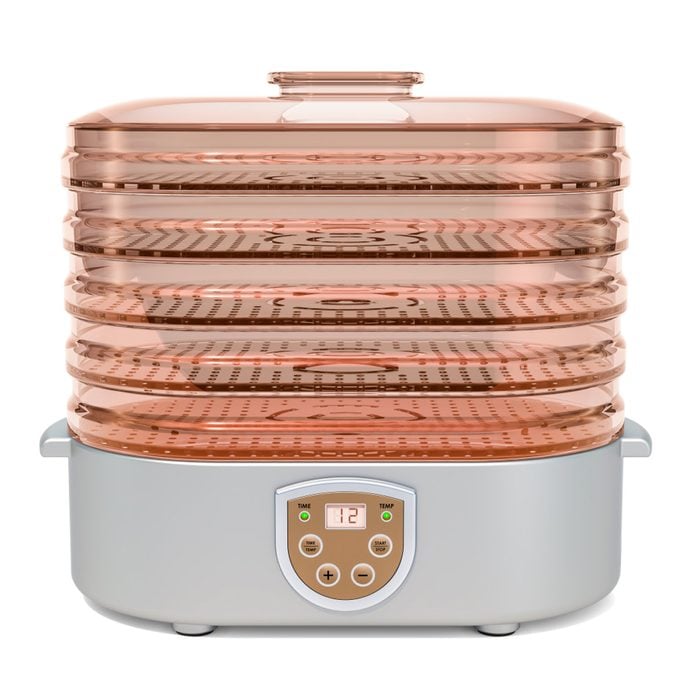
Humidifier
If you’re like many people, dry air can become a major irritant. Whether it’s causing dry skin or a nagging cough, the most common solution is to purchase a humidifier. Well, save yourself a trip to the store by using your dehydrator as an impromptu humidifier.
A dehydrator works by sucking moisture out of the food products and dispersing it into the air. To turn it into a humidifier, simply put a bowl or two of water into the dehydrator and let it do its thing. Before long, all that water will be distributed throughout your indoor air. Check out this collection of 12 DIY ways to combat winter dryness.
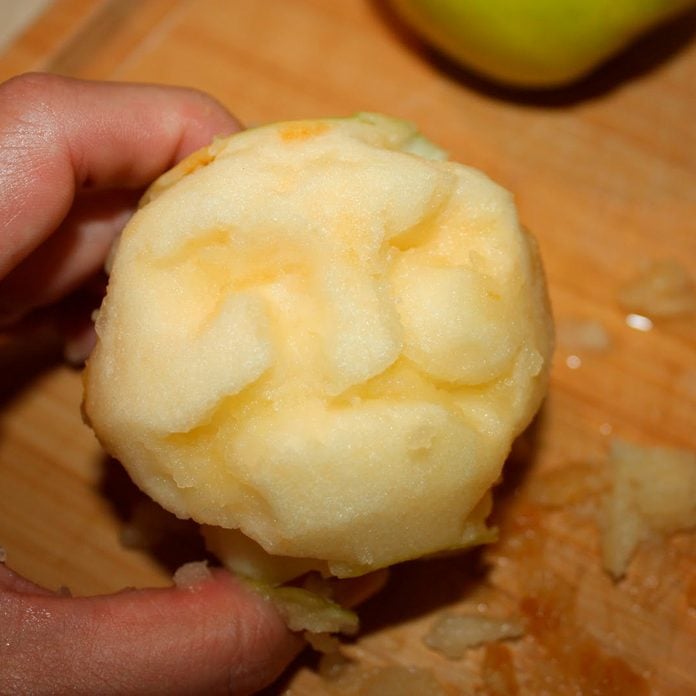
Carved Apples
If you’ve ever seen a home with country decor then chances are you’ve seen a dried apple carving. Artisans carve shapes and faces into apples and then dry them, letting the evaporation create a more textured, weathered appearance. This is a fun craft and can be made even more efficient with the use of the food dehydrator. Simply place your completed carving into the dehydrator, and when you take it out it will have been transformed and preserved.
Apple carving is a fun way to introduce kids to a craft and to get them started as young makers and DIYers. Here’s even more advice on how to inspire kids to adopt a DIY mindset.
Photo: Courtesy of Little Acorn Learning